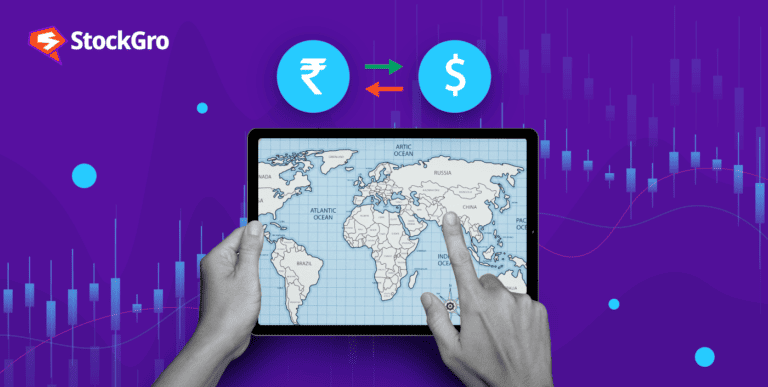
Shadow price is a concept that often lurks in the background of economic discussions, yet it plays a pivotal role in decision-making processes that affect businesses, government policies, and everyday life.
This blog aims to shed light on the intriguing world of shadow price, exploring what it is, why it’s essential, and how it influences various aspects of our economy.
What is the shadow price?
Shadow price is a concept that gives a rough estimate of how much something is worth when it’s not easy to figure out its exact value because there’s no regular market for it. One makes this estimate by guessing how much a company would be willing to pay for it.
However, because shadow prices are based on guesses and not actual prices, they might not be very accurate. Financial experts use shadow price to put a value on things like ideas or other stuff that does not have a set price. This helps us understand how these things affect the economy, even though we can’t put a definite price on them.
Sometimes, when we are deciding if a project is a good idea, we use shadow pricing to see if it is worth doing. It helps us consider all the costs and benefits, even the ones that are hard to measure so that we can make smarter decisions.
You may also like: Understanding asset valuation: A comprehensive guide
What is the mechanism behind shadow pricing?
Shadow pricing primarily relies on cost-benefit analysis, particularly for items without standard market transactions. Assigning a shadow price allows analysts to gain a clearer perspective on how the costs linked to an item influence the benefits it brings.
This concept becomes more apparent through an illustration:
ABC company is a transportation firm that occasionally makes late-hour deliveries for its exclusive clientele. This arrangement proves mutually advantageous as these clients provide them with more clients through referrals.
ABC has established a shadow price of ₹.2,00,000 as the value it derives from this arrangement. Consequently, the company allocates ₹.2,00,000 to compensate the truck drivers responsible for these deliveries.
Let us look at another shadow price example wherein a business proposes a plan for office facility renovation. It also considers assigning a monetary value to the anticipated advantages of its renovation endeavour. While it is simple to attach a dollar figure to the renovation expenses.
There are also other benefits of the renovation and their quantification is less straightforward. The potential benefits of the project encompass enhanced employee morale, reduced expenses associated with staff recruitment, diminished employee turnover rates and improved productivity.
These benefits are invaluable but are not as easily quantifiable as the renovation costs, thus requiring shadow pricing to estimate their financial impact accurately.
Also read: What is a product portfolio, and how is it relevant for financial analysis?
Advantages and disadvantages of shadow price
- Shadow price offers businesses a comprehensive understanding of a project’s actual value. It serves as an integral component of cost-benefit analysis.
- It aids management in making well-informed decisions regarding various aspects of a project’s strategy and scope.
- Shadow pricing promotes ethical responsibility and plays a significant role in accurately assessing a project’s worth.
However, there exist several limitations to shadow pricing:
- It inherently carries subjectivity due to its application to intangible assets, rendering the shadow price unverifiable.
- Analysts must rely on significant guesswork. It’s possible that biases can seep into the process, potentially leading to inaccuracies.
- Flawed methodologies used in shadow price determination can result in misguided actions that may harm a company’s reputation.
- Critics of shadow pricing also contend that it overly emphasises short-term social opportunity costs while neglecting the long-term priorities of the business. This imbalance can potentially hinder the company’s overall success and reputation.
Shadow pricing in economic terms
Shadow price represents the cost associated with something or activity whose genuine value proves challenging to ascertain. For example, How do you determine the price of a fully matured tree?
At first glance, it seems relatively simple to estimate its value by factoring in the wood, leaves, and fodder that can be sold. But is this assessment comprehensive enough?
What about the nests that once graced its branches for birds? How do you gauge the worth of the oxygen it generates, the carbon dioxide it absorbs, or the shade it offers on scorching days? And what about its role in maintaining soil moisture by retaining water in its roots?
These are opportunity costs that become sacrificed when that single tree is felled. However, putting an exact price on such elements remains a formidable challenge. While one can assign arbitrary values to these factors (if deemed necessary), they may not truly reflect their genuine worth, rendering them “shadow prices.”
Also read: The fair value method of asset valuation
Conclusion
Shadow price is a method for assigning a monetary value to items that lack easily determinable prices or are not typically bought and sold in conventional markets. These valuations can fluctuate depending on various factors, including time, location, and occupation. Cost-benefit analysis or probability assessment is often employed to determine these prices, which are then utilised in making informed decisions.
Whether it’s a decision related to a small-scale project or one of international stature, shadow pricing is important . However, it is crucial to acknowledge its limitations, such as the absence of concrete evidence, reliance on subjective assumptions, and the potential neglect of long-term social opportunity costs. These factors should be carefully weighed before basing any decision on shadow pricing.

